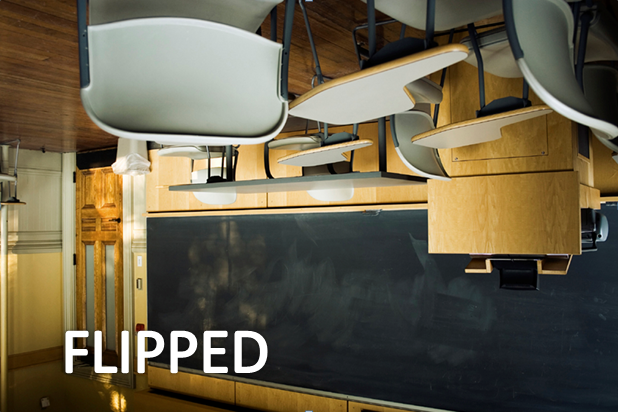 by Randee Blair, Associate Director, Center for Talent Development at Northwestern University
by Randee Blair, Associate Director, Center for Talent Development at Northwestern University
A recent hot topic in education has been the flipped classroom debate. With the growth of online options, learning has expanded outside of the school classroom, and this trend only seems to be growing.
What’s flipped is that instead of doing homework, students watch online instructional movies, videos, lectures and visit websites at home, with the opportunity to revisit challenging sections and formulate questions. The teacher then has more time to facilitate discussion, based on these questions and is then able to help students with activities and assigned problems reinforcing the concepts during class time.
Why are flipped classrooms gaining popularity? In a flipped classroom, “Class time is spent focusing on [students’] needs, not on the teacher’s schedule,” says science teacher Brian E. Bennett on
SmartBlog on Education. “Students are encouraged to make decisions, question, succeed and fail in a supportive, dynamic learning environment. Choice is rampant in flipped learning, and students are given an opportunity to defend their choices as a partner in learning rather than a subordinate.”
Flipped classrooms allow for flexibility and have become a way for teachers to differentiate their instruction in order to meet individual student needs. Education consultant Jonathan Bergmann is a pioneer of the flipped classroom concept. Bergmann said in an April
interview: “The benefits are huge. Kids learn to become independent learners. They figure out how to learn for themselves.”
Others are not yet convinced. A blog entry titled “
Flipping’ Classrooms: Does It Make Sense?” quotes teacher John Hrevnack: “[a] concern I have is that the lecture is portrayed as the teacher speaking and the students listening. This is not the way that most teachers ‘lecture.’ Most teachers use an Interactive Lecture.” Hrevnack describes the “Interactive Lecture” as one in which the teacher prepares questions to spark students’ interest during the lecture and getting them to think critically. Live or personalized online programs may assuage these concerns and offer the advantage of interacting with peers from far off and diverse communities.
“Flipped learning is not a one-size-fits-all approach nor is it appropriate in every situation,” concludes Bennett. Given that e-learning is not going away, how can schools use it to their students’ greatest advantage? “Let’s begin to focus on the philosophical decisions teachers and schools need to make to move education forward in a connected world,” he suggests. “For me, flipping the learning process was the best way to make that shift, and that’s simply what it is — a tool to push teaching and learning forward. I am continually learning and improving on what has worked in the past to become a better teacher.”
Gifted LearningLinks is CTD’s online course program. At this time most courses are taken independently by students. However, more schools are starting to take advantage of the program as a way to differentiate for academically gifted students.
What do you think about flipped classrooms?
Randee Blair is Associate Director at the Center for Talent Development with direct responibsility for online Gifted LearningLinks and the Saturday Enrichment Progam. She spent 30 years in the Illinois public school system as a teacher and curriculum coordinator for math and gifted education. She is an esteemed speaker who presents at conferences across the country and author of several professional development books for teachers.